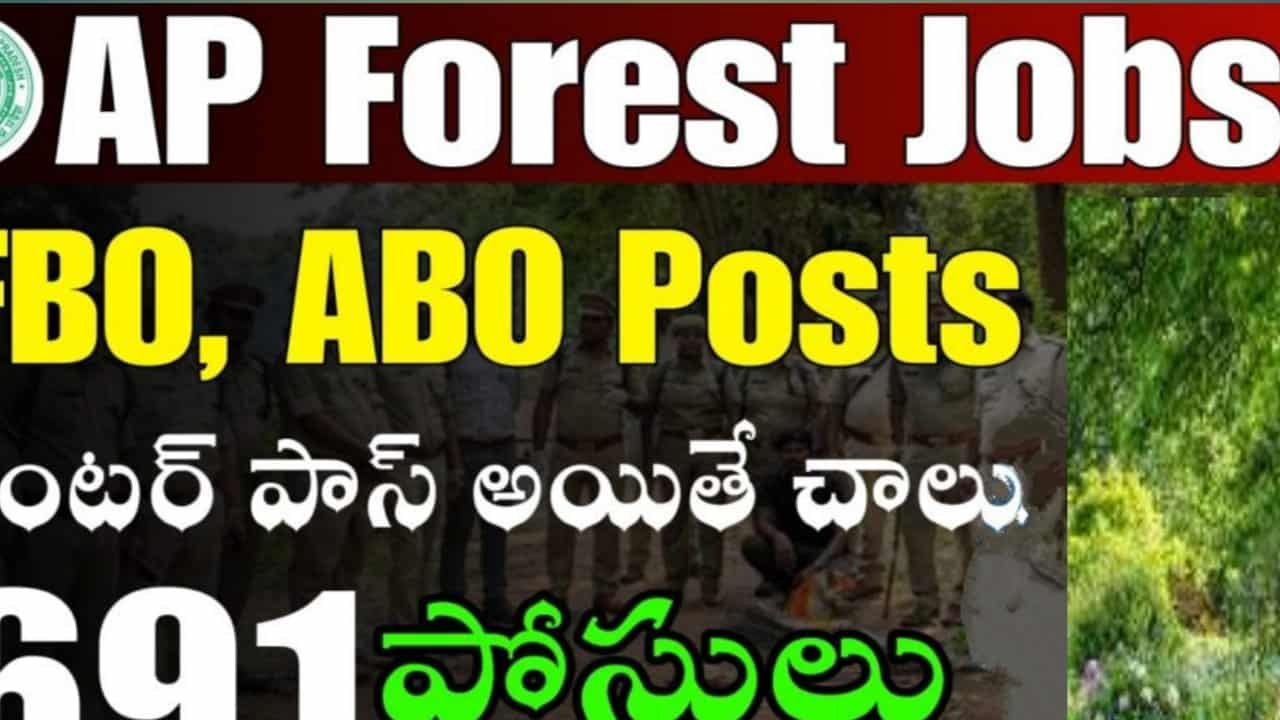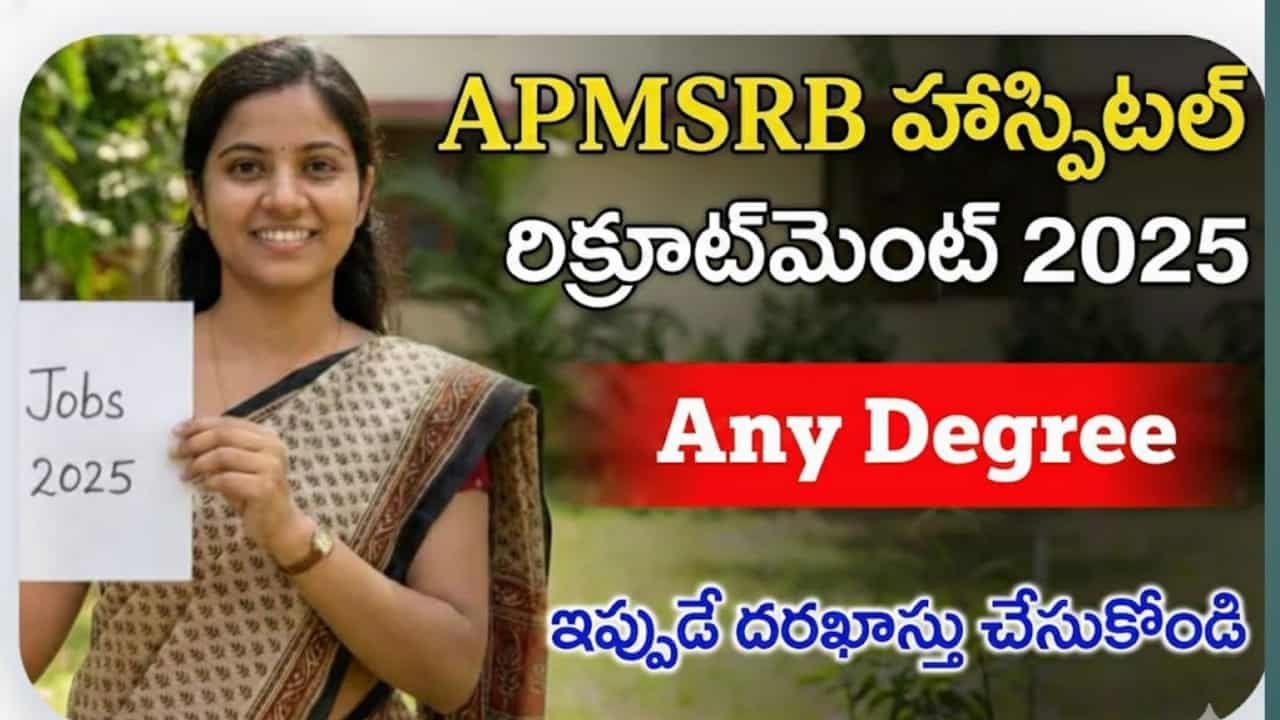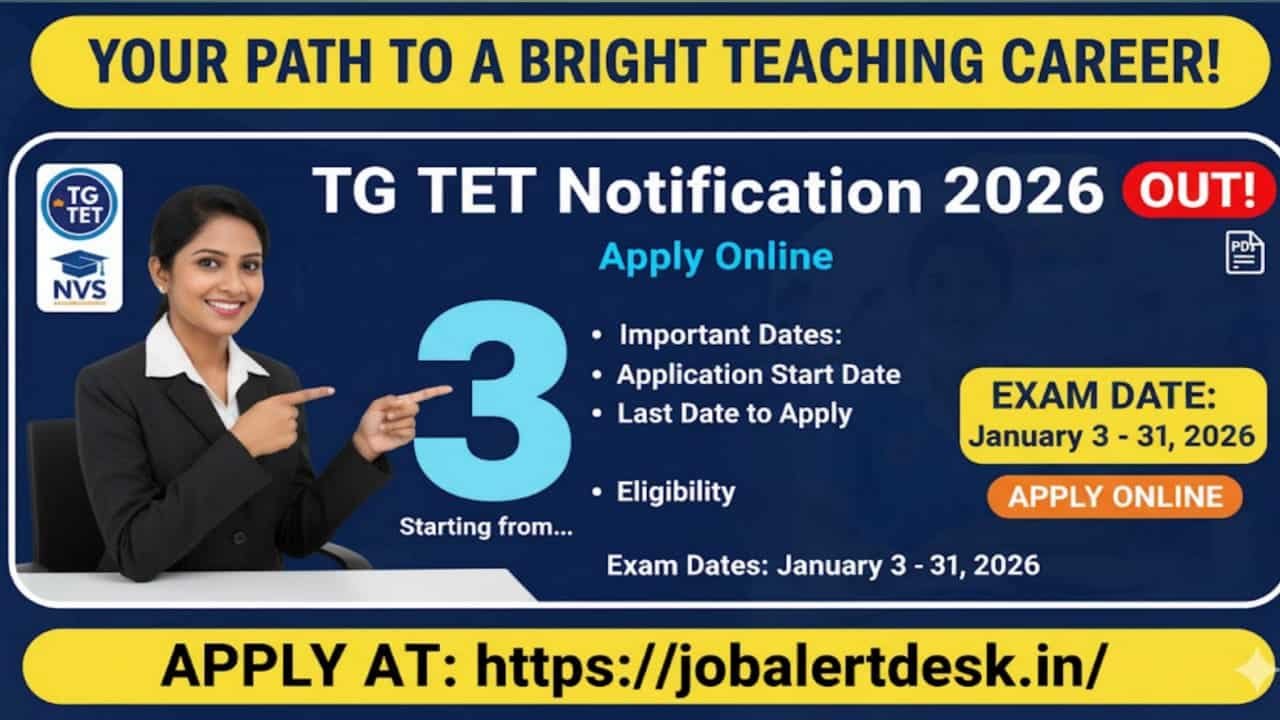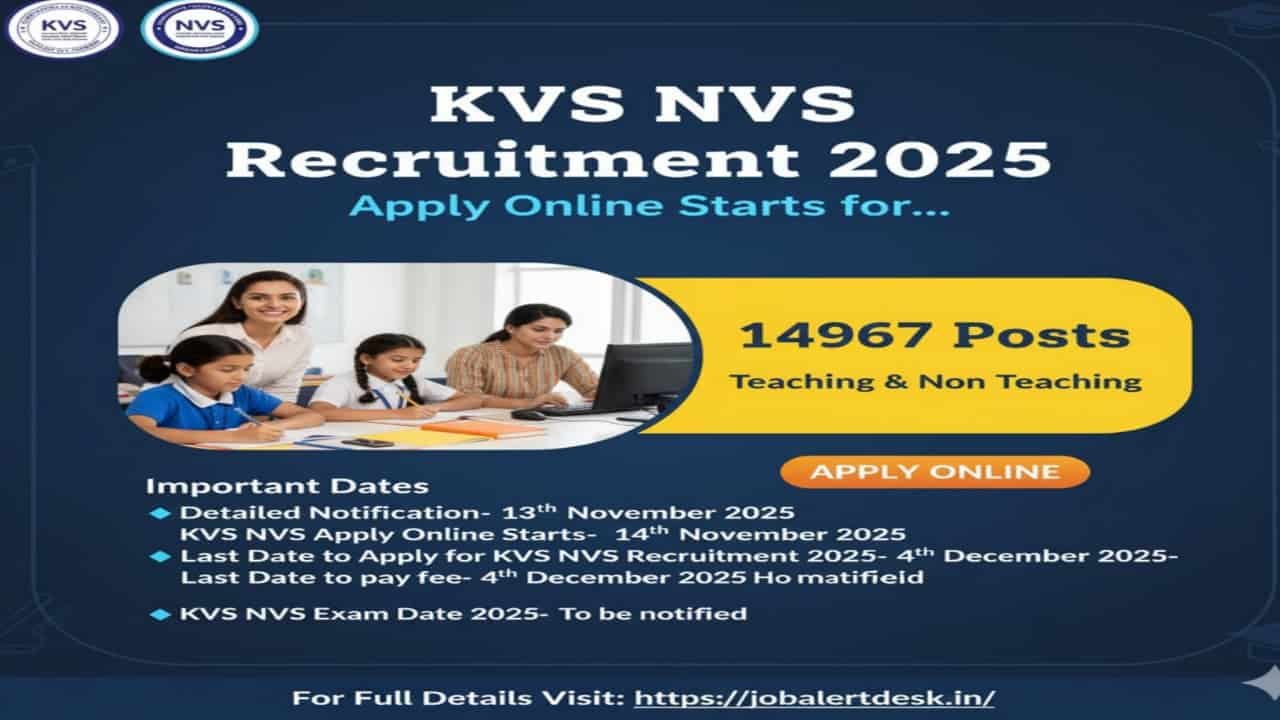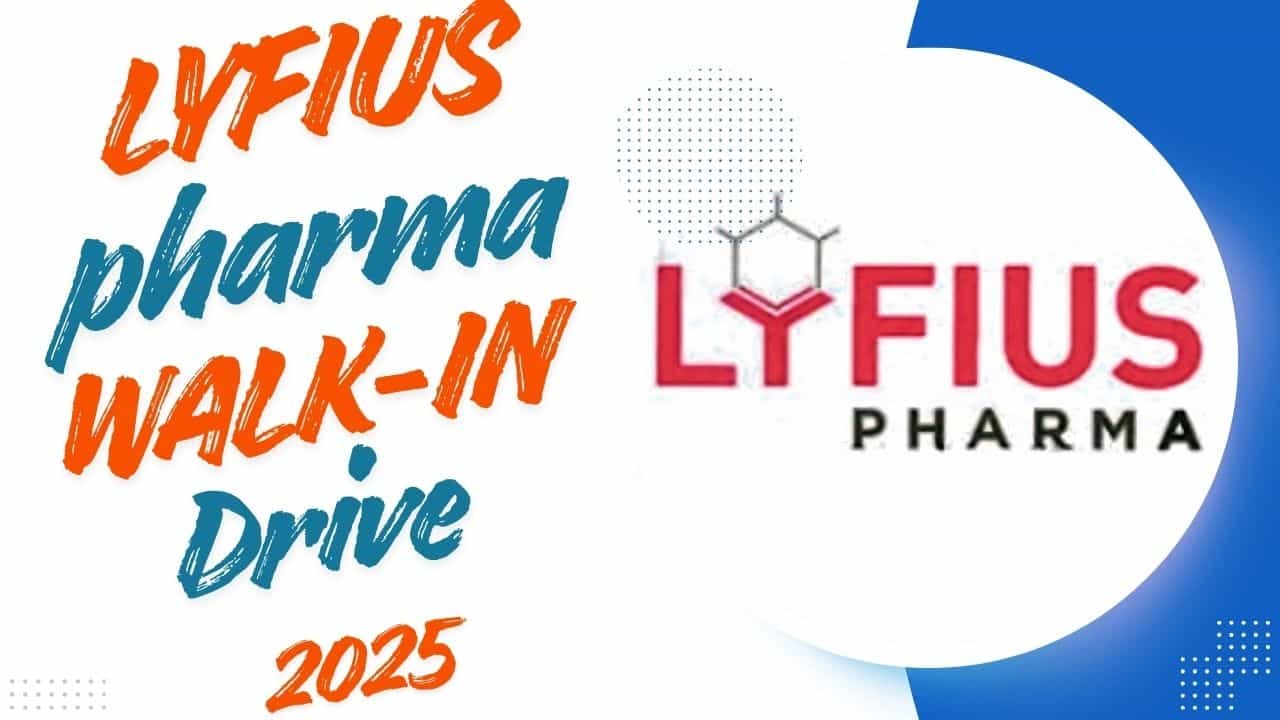AP Forest Department Recruitment 2025
AP Forest Department Recruitment 2025The Forest Beat Officer and Assistant Beat Officer Officer Notification has been posted on the official website of the Andhra Pradesh Public Service Commission. Anyone interested in applying for the APPSC Forest Beat Officer Notification 2025 may now use the URL provided in this post to get the official notification PDF. A total of 691 FBO and ABO posts have been declared by department authorities. The APPSC Forest Beat Officer Notification 2025 has been posted on the official website by department authorities. Applicants can now get theofficial notice and review it for all the information. On June 9, 2025, the APPSC Forest Beat Officer Exam Date 2025 is also revealed. Candidates can apply starting on July 16, 2025, after reviewing the APPSC FBO Notification 2025 PDF. All of the following information is provided: educational background, age restriction, written exam, selection procedure, and merit list. Check Right Away
AP Forest Department Recruitment 2025
| Organization | AP Forest Department Recruitment |
|---|---|
| Conducting By | APPSC |
| Department Name | Forest Beat Officer, Assistant Beat Officer |
| Vacancy | 691 |
| Selection Process | Written Exams, Physical Efficiency, Medical Test , DV etc |
| Application Mode | Online |
| Online Application Start | 16th July 2025 |
| Last Date to apply | 5th August 2025 (11:59 pm) |
| Last Date to pay application fee | 5th August 2025 (11:59 pm) |
| Exam Date | To be notified |
| Official website | https://portal-psc.ap.gov.in/Default |
| Similar Jobs | Click Here |
APPSC FBO ABO Vacancy 2025
There are 691 openings for FBO and ABO positions, which will be filled by APPSC, according to the AP Forest Department Recruitment 2025 announcement. Below are the specific post-by-post openings. Candidates that are interested can review and apply for open positions.
The Name of Districts and Divisions are given below:
| Name of the District | Name of the Division |
| Srikakulam | Srikakulam |
| Vizianagaram | Vizianagaram |
| Visakhapatnam | Visakhapatnam Narsipatnam Paderu |
| East Godavari | Kakinada Chinturu |
| West Godavari | Eluru |
| Krishna | Krishna |
| Guntur | Guntur |
| Nellore | Nellore |
| Prakasam | Giddalur Markapur |
| Ananthapuramu | Ananthapuramu |
| Chittoor | Chittoor (West) Chittoor (East) |
| Kadapa | Kadapa Proddatur Rajampeta |
| Kurnool | Kurnool Nandyal (WL) Atmakur (WL) |
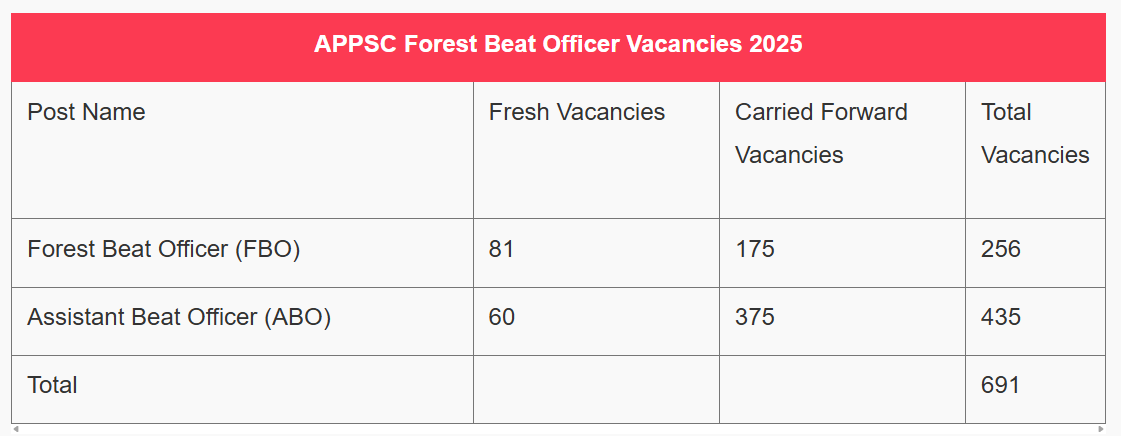
Age Limit
Applicants for the APPSC Forest Department Recruitment 2025 must be at least the age range listed in the official announcement.
The deadline for determining the age restriction is July 1, 2025.
18 years old is the minimum age.
30 years old is the maximum age.
Educational Qualification:
The Intermediate (12th class) exam or an equivalent test must have been passed by the candidates.
Application Fee
Candidates in the general category must pay an application processing fee of Rs. 250.
The examination fee is Rs. 80 for applicants in the general category, SC, SC, and BC candidates from Telangana State, as well as for unemployed candidates between the ages of 18 and 31 and ex-servicemen. No Charge
Selection process
1. Initial Assessment An OMR-Based Offline
2. The primary written test An online test
3. Physical Inspection
4. Verification of Certificates
Preliminary Examination An Offline/ OMR Based
The initial test will have an intermediate level of difficulty and be objective in nature.
For every wrong response, the score is deducted, or -1/3.
The Forest Beat Officer Screening Test Exam Pattern is available to candidates below.

APPSC FBO ABO Mains Exam Pattern
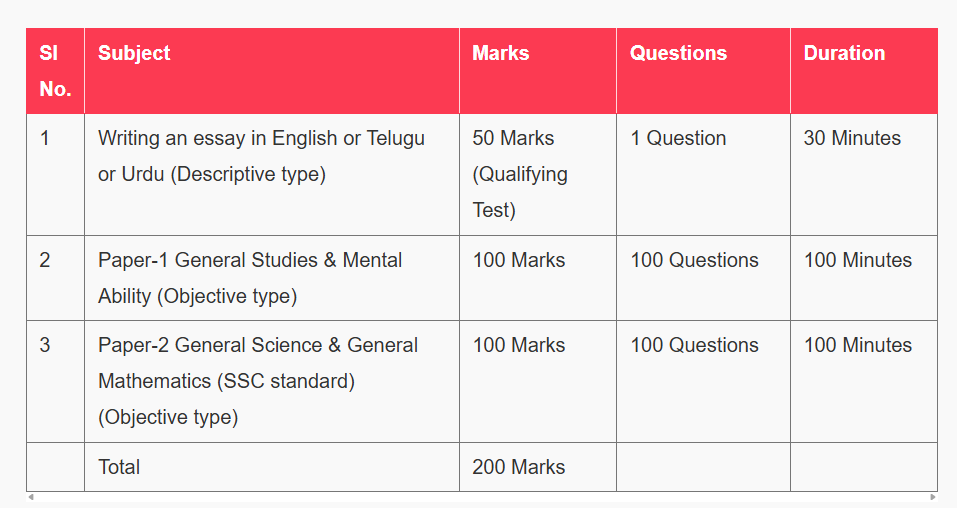
Physical Measurement Test and Walking Test:

Walking Test

APPSC FBO ABO Salary 2025
The government will provide candidates who are chosen as FBO ABO significant pay and perks. Employees are entitled to HRA, TA, DA, ESI, insurance, and other perks in addition to their base pay. View the comprehensive post-by-post wage information shown below:

Syllabus for Computer Proficiency Test
1. INTRODUCTION TO COMPUTERS: Introduction to Computers – Components and their
classification – Peripheral devices and their purpose. Input Devices – Keyboard, Mouse,
Scanner, Lighten, Touch screens, Joystick, Micro phone, Scanner, Digital camera, Bar code
reader, Biometric sensor Output Devices: Display devices, Printers, Monitor, Speaker, Plotter,
Secondary Storage Devices – Feature- Driven Development (FDD), Magnetic tape, Universal
Serial Bus(USB), Pen Drives, Disks – The Role of input Processing / output processing devices –
Computing Concepts – Data – Information – Random Access Memory (RAM) – Read-Only
Memory(ROM) – Control Unit – Memory Unit – Arithmetic Logic Unit(ALU).
2. COMPUTER SOFTWARE TYPES: System Software, Application Software, Embedded software,
Proprietary Software, Open source software (their purpose and characteristics only).
3. OPERATING SYSTEM: Purpose of operating system, Single User and Multi User Operating
Systems with Examples.
4. WINDOWS OPERATING SYSTEM: Interfacing Graphical User Interface (GUI), Differences
between Character User Interface (CUI) and Graphical User Interface(GUI) – working With
Files and Folders – More About Files – Running An Application Through The File Manager –
Running an Application Through The Program Manager – Setting up of Printer, Webcam,
Scanner and other peripheral devices,
5. LINUX/MAC OS (only basic concepts): Introduction to Linux – Features and advantages of
Linux, File handling commands, directory handling commands – User Management – File
permissions Macintosh Apple Computer (MAC) OS – Introduction – Advantages of Macintosh
Apple Computer (MAC) OS . Basics commands
6. INTERNET CONCEPTS (only basic concepts): Minimum Hardware and Software Requirements
for a system to use internet, Communication Protocols and Facilities – Various browsers – What
is Internet Protocol(IP) Address – Steps required in connecting system to network – Uploading
and Downloading Files from Internet
7. ELECTRONIC MAIL (only basic concepts): Sending and receiving mails, Basic E-Mail Functions,
Using your word processor for E-mail, Finding E-Mail Address, Mailing Lists and lists Servers.
8. WORLD WIDE WEB (only basic concepts): WWW advantages of the Web – how to navigate
with the Web – Web Searching.
GENERAL MATHEMATICS (50 Marks)
1. ARITHMETICS:
a) Number System-Natural numbers, Integers.
b) Rational and Real numbers.
c) Fundamental operations, addition, subtraction, multiplication, division, square roots, Decimal
fractions.
d) Unitary method-time and distance, time and work, percentages, applications to simple and
compound interest, profit and loss, ratio and proportion, variation.
e) Elementary Number Theory – Division algorithm, Prime and composite numbers. Tests of
divisibility by 2, 3, 4, 5, 9 and 11.
f) Multiples and factors, factorisation Theorem. H.C.F. and L.C.M. Euclidean algorithm. Logarithms
to base 10, laws of logarithms, use of logarithmic tables.
2. ALGEBRA:
a) Basic Operations, simple factors, Remainder Theorem, H.C.F., L.C.M.
b) Theory of polynomials, solutions of quadratic equations, relation between its roots and
coefficients (Only real roots to be considered). Simultaneous linear equations in two
unknowns – analytical and Graphical solutions. Simultaneous linear in equations in two
variables and their solutions.
c) Practical problems leading to two simultaneous linear equations or in equations in two
variables or quadratic equations in one variable and their solutions.
d) Set language and set notation, rational expressions and conditional identities, laws of
indices.
3. TRIGONOMETRY:
Sine x, Cosine x, Tangent x when Oo = x = 90o values of sin x, cos x and tan x, for x= Oo, 30o, 45o, 60o
and90o
Simple trigonometric identities. Use of trigonometric tables, Simple cases of heights and distances.
4. GEOMETRY:
i) Lines and angles, Plane and plane figures.
ii) Theorems on
a) Properties of angles at a point.
b) Parallel lines.
c) Sides and angles of a triangle.
d) Congruency of triangles.
e) Similar triangles.
f) Concurrence of medians and altitudes.
g) Properties of angles, sides and diagonals of a parallelogram, rectangle and square.
h) Circles and its properties including tangents and normals.
i) Loci.
5. MENSURATION:
a) Areas of squares, rectangles, parallelograms, triangle and circle.
b) Areas of figures which can be split up into the figures (Field Book).
c) Surface area and volume of cuboids, lateral surface and volume of right circular cones
and cylinders, surface area and volume of spheres.
6. STATISTICS:
a) Collection and tabulation of statistical data.
b) Graphical representation – frequency polygons, histograms, bar charts, pie charts etc.
c) Measures of central tendency.
Beta feature
Beta feature
Beta feature
Beta feature
Beta feature
